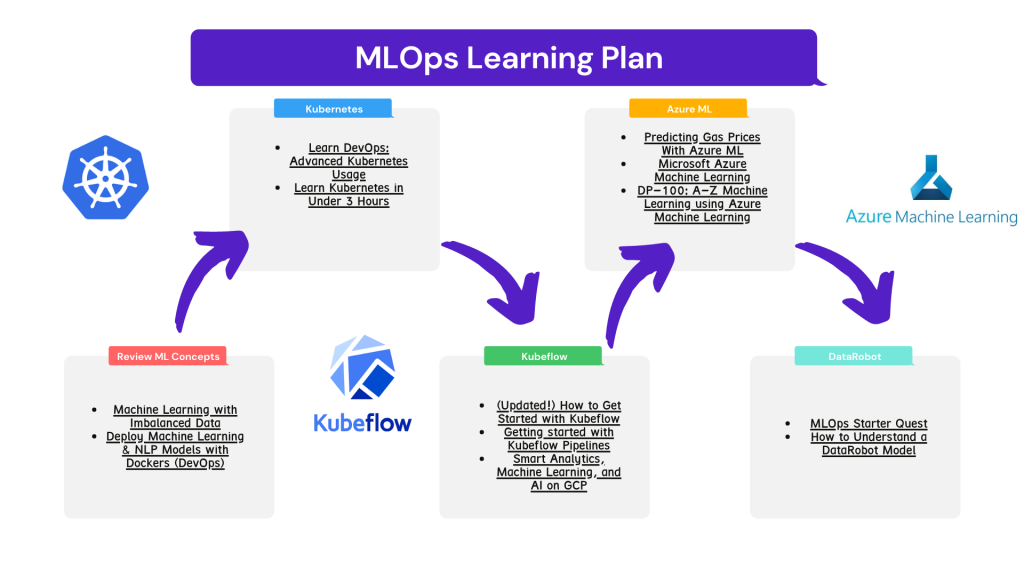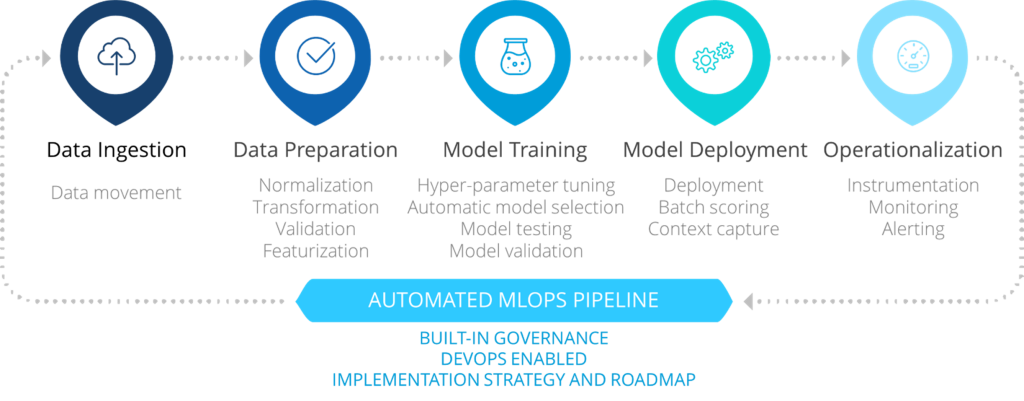
If you’re involved in machine learning operations, you may be familiar with the concept of MLOps roadmap. This roadmap is a framework for managing the entire machine learning process, from data collection to model deployment and beyond. It’s designed to help organizations streamline their machine learning efforts and ensure that they’re achieving their goals efficiently and effectively.
What is MLOps?
Before we dive into the specifics of MLOps roadmap, let’s take a moment to define what we mean by “MLOps.” At a high level, MLOps refers to the set of practices and processes that are used to manage the machine learning lifecycle. This includes tasks such as data preparation, model training, model validation, and model deployment.
MLOps is a relatively new field, but it’s becoming increasingly important as more organizations seek to leverage machine learning to gain a competitive edge. By implementing MLOps best practices, organizations can ensure that their machine learning efforts are scalable, repeatable, and sustainable.
What is an MLOps Roadmap?
So what exactly is an MLOps roadmap? At its core, an MLOps roadmap is a high-level plan that outlines the steps an organization will take to manage its machine learning efforts. This roadmap typically includes the following elements:
Data Collection and Preparation
The first step in any machine learning project is to collect and prepare the data that will be used to train the model. This typically involves identifying the relevant data sources, cleaning and pre-processing the data, and transforming the data into a format that can be used by the machine learning algorithms.
Model Training and Validation
Once the data has been collected and prepared, the next step is to train and validate the machine learning model. This involves selecting the appropriate algorithms, tuning the model parameters, and evaluating the model’s performance using validation data.
Model Deployment and Monitoring
Once the model has been trained and validated, the next step is to deploy it into production. This involves integrating the model into the organization’s software systems, monitoring its performance, and making any necessary updates or improvements over time.
Continuous Improvement
Finally, an MLOps roadmap should include a plan for continuous improvement. This involves regularly reviewing and updating the machine learning model to ensure that it remains accurate and effective over time.
Why is an MLOps Roadmap Important?
So why is an MLOps roadmap important? There are several reasons:

Ensuring Consistency and Quality
By following a well-defined MLOps roadmap, organizations can ensure that their machine learning efforts are consistent and of high quality. This can help to improve the accuracy and effectiveness of the machine learning models, leading to better business outcomes.
Streamlining Operations
An MLOps roadmap can also help organizations to streamline their machine learning operations. By breaking the process down into manageable steps and identifying potential bottlenecks or areas for improvement, organizations can optimize their machine learning efforts and achieve better results with less effort.
Facilitating Collaboration
Finally, an MLOps roadmap can facilitate collaboration between different teams and stakeholders. By providing a common framework for managing machine learning projects, organizations can ensure that everyone is working towards the same goals and that communication is clear and effective.
Conclusion
In conclusion, an MLOps roadmap is a powerful tool for managing machine learning efforts. By breaking the process down into manageable steps and providing a framework for collaboration, organizations can ensure that their machine learning projects are successful and sustainable over time. Whether you’re just getting started with machine learning or you’re looking to improve your existing practices, an MLOps roadmap is a valuable resource that can help you achieve your goals.